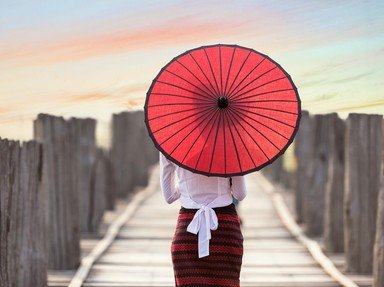Quiz Answer Key and Fun Facts
1. What festival is the Lunar New Year also known as?
2. Families welcome the New Year with a thorough spring-cleaning, traditionally on the 28th day of the last month of the year. A "Big Sweep" is supposed to rid the house of all misfortune accumulated in the past year. How should the sweeping be done?
3. Dating as far back as the Song Dynasty (960-1127), during the Lunar New Year people paste the character FU (福 ) on their walls and doors to express their hopes and wishes for the new year. The word "fu" has a variety of interpretations. Which one does "fu" not represent?
4. No New Year celebration is complete without the traditional gift of money in red envelopes known as lai see (利是) in Cantonese and hóngbāo (紅包) in Mandarin. Red envelopes are to be filled with crisp, new bills but not coins. Why is filling red envelopes with coins not proper etiquette?
5. The use of certain instruments and tools are considered to be bad luck on New Year's Day. Which of the following should not be used?
6. To the Chinese, many flowers have symbolic and auspicious meanings, hence indispensable for welcoming a prosperous new year. Some of the most popular ones include orchids, narcissus, peonies and gladioli, which are used to adorn the house and offered to deities and ancestors. However for many households, one will find a flowering tree sitting in huge ornate vases. What is this popular tree?
7. Noise seems to be a feature of almost every Chinese festivity, as noise is a sign of life. Setting off firecrackers brings good luck and happiness while warding off evil. Before the invention of gunpowder, what were firecrackers made of?
8. A universal form of Lunar New Year greeting is "Gōng Xǐ Fā Cái" in Mandarin or "Gong Hei Fat Choy" in Cantonese. However this greeting does not mean "Happy New Year" as many people assumed. What does this phrase literally mean?
9. Fruit is a great gift during Lunar New Year. Which fruit is given to symbolize good fortune and vibrancy?
10. If you are Chinese, you will have an extra birthday every year! Known as "Everybody's Birthday" or renri (人日), this is the day that mankind were supposed to be created. Which day of the Lunar New Year is this?
Source: Author
nokbbear
This quiz was reviewed by FunTrivia editor
Bruyere before going online.
Any errors found in FunTrivia content are routinely corrected through our feedback system.
